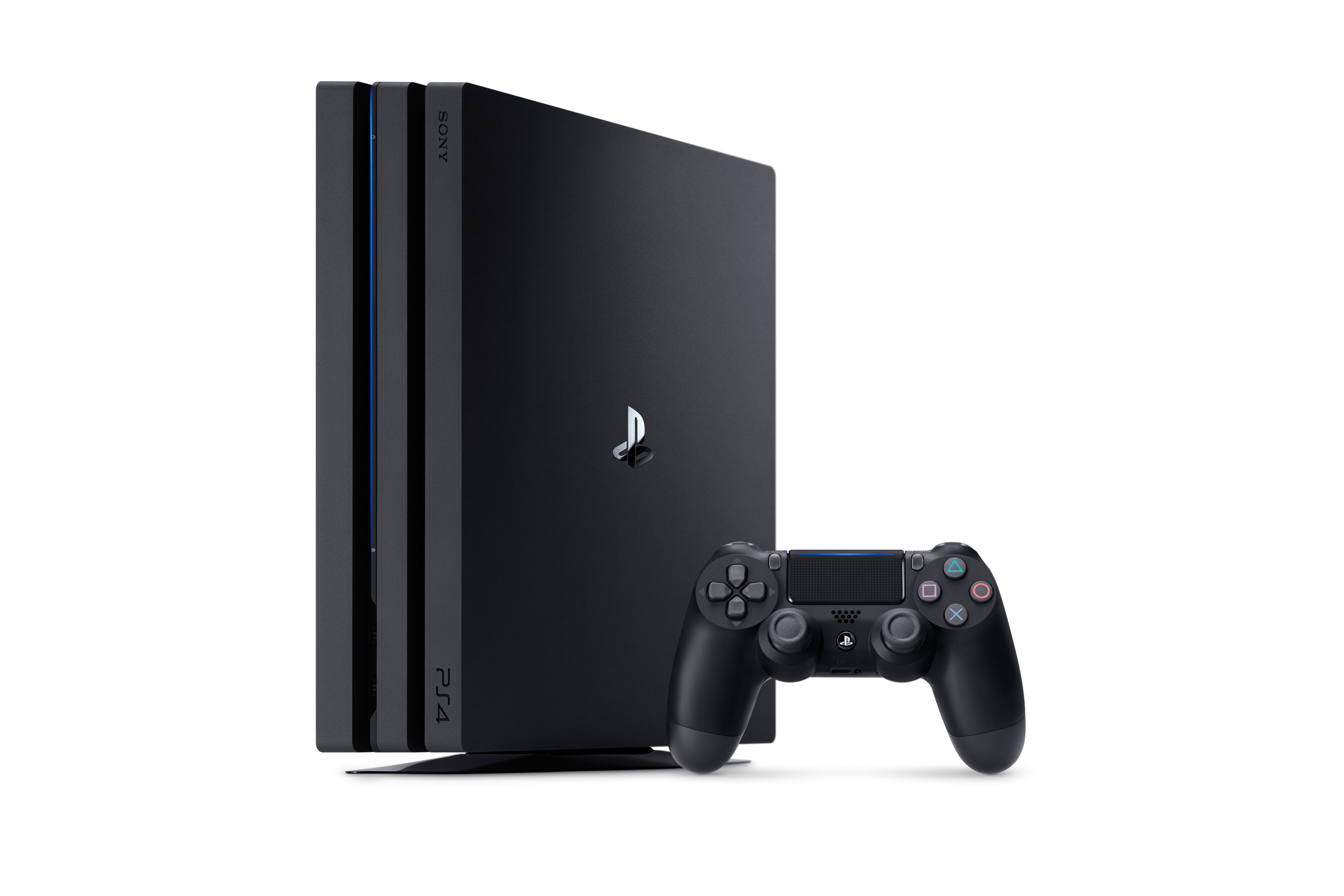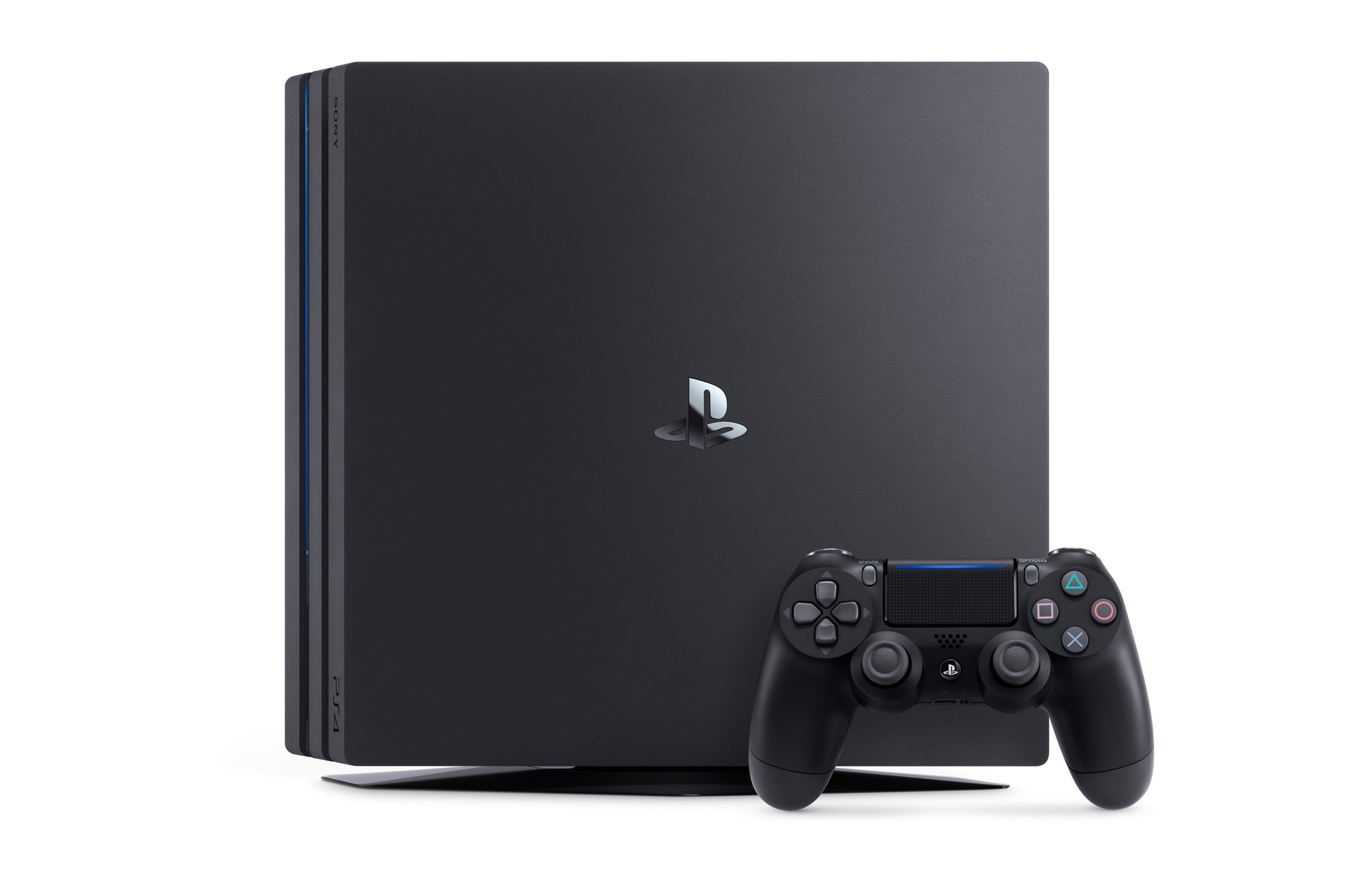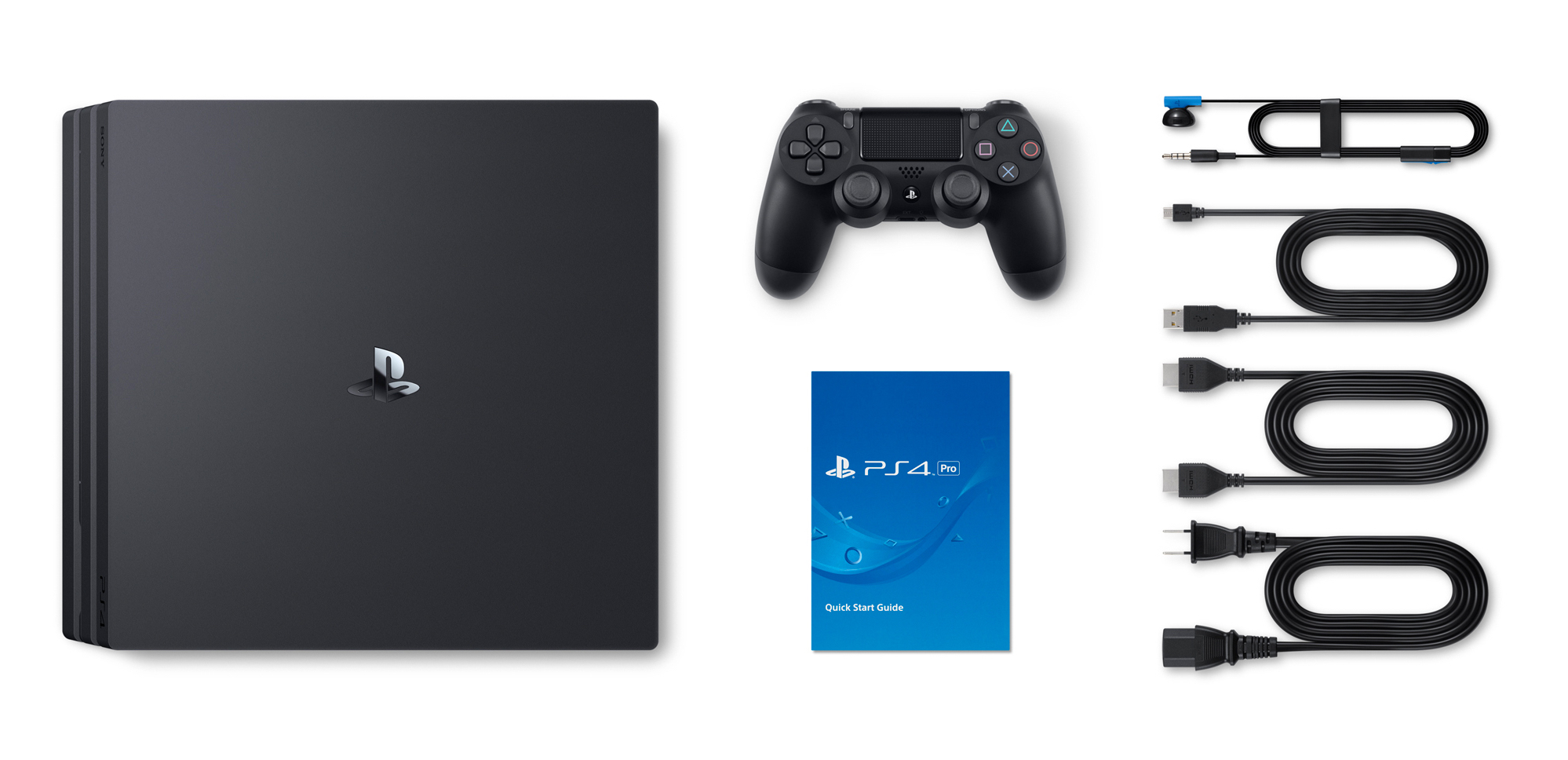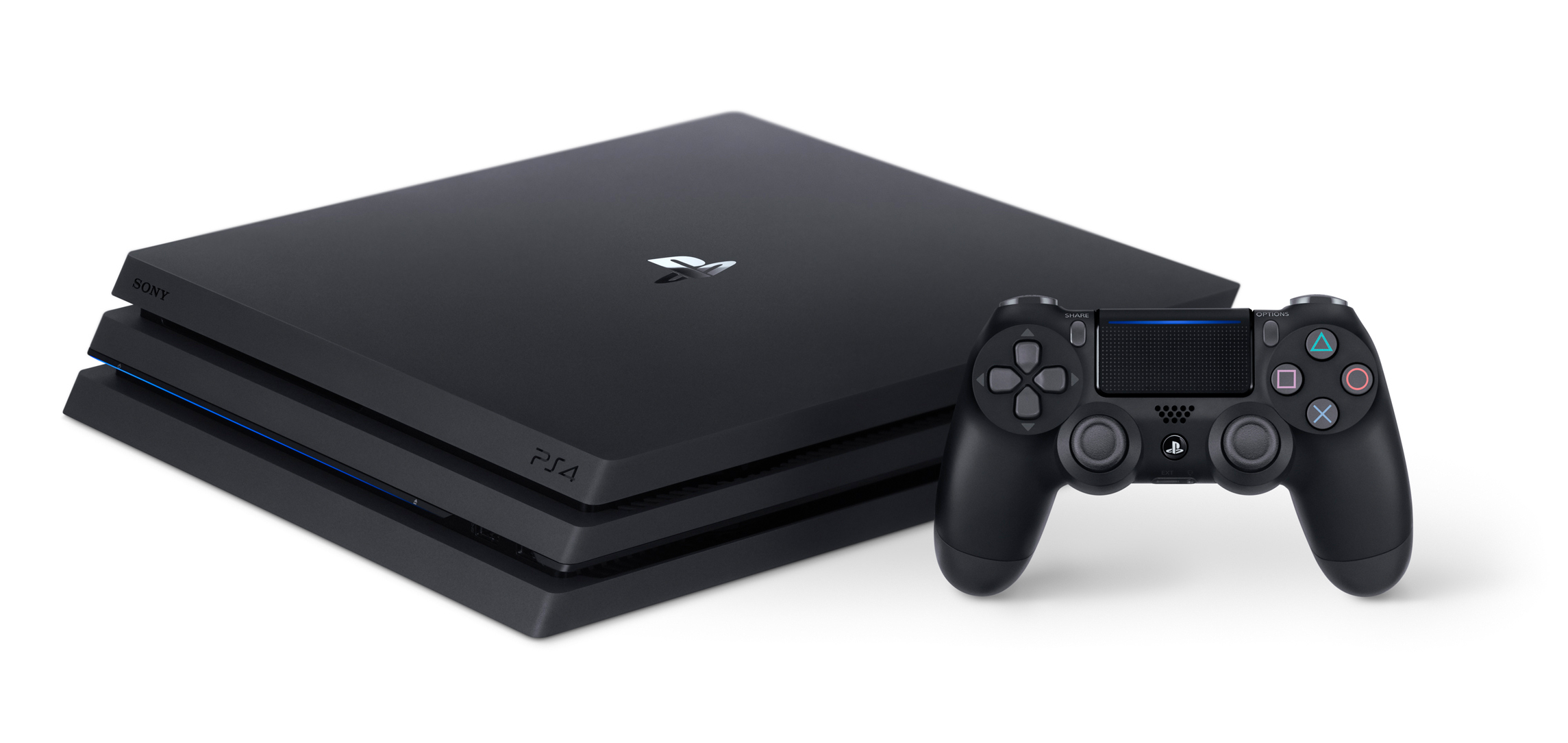
The PlayStation 4 Pro has just one problem, but it’s a doozy: I can’t show you why it exists.
Sony’s souped-up $399 super-console, due Nov. 10, is all about making things faster, or prettier, or both. But one of its chief attractions, 4K graphics (or let’s call them “4K-ish”), needs an “ultra high definition” 4K television to shine — a format with roughly four times the visual fidelity of today’s mere “high def” 1080p displays. 4K televisions with trimmings like “high dynamic range” and “low input lag” and “full bandwidth RGB” aren’t cheap. The 43-incher I bought with those features to run the PS4 Pro unit Sony sent over set me back in the vicinity of $800. (Read TIME’s 4K TV buyer’s guide here.)
And it’s conveying to someone why they’d want to drop that kind of dinero on this console that’s the trick. Seeing is believing, so when someone boasts as much, you want a gander. With the PS4 Pro, most people can’t have one — at least, not without visiting a demo station somewhere. The new console’s higher-pixel video promises don’t translate to comparably lo-fi smartphones, tablets, laptop screens, and televisions that top out at merely “high definition” (which is true of most of them). And so Sony is in part making an appeal to faith. It’s asking someone to “get” a format like Blu-ray, while piping it through outputs analogous to 20th century TV sets.

I’m going to argue the case for upshifting to a PS4 Pro, but let’s get something else off the table before we geek out. Are you happy with your PlayStation 4? Gobsmacked by what it can do already? Unpersuaded by leaps in processing power that make graphics pop but do nothing to change the way games play? Then the PS4 Pro isn’t for you. Nor need you fear obsolescence. PS4 Pro exclusives don’t exist and never will. Any game that runs on PS4 Pro has to exist on PlayStation 4 through the remainder of this console cycle. Sony’s made that a promise, summed up as “All PS4 games are PS4 Pro games, and vice-versa.”
Read more: The full list of PlayStation 4 Pro Launch Games
Think of the PS4 Pro as like Sony dropping a more powerful graphics card into a desktop computer. The sort that lets you crank up a game’s resolution and graphics settings without garroting the frame rate. That’s effectively what’s going on here. Sony has up-clocked the PlayStation 4’s central processor and added a second graphics chip, producing roughly twice the overall crunch-power. This is why the PS4 Pro exists. And on a solid 4K television, the results range from impressive to breathtaking.
It’s also fairly gigantic, edging toward the original Xbox One’s monster footprint, though with more stylish lines, sloping backward at front like a high wedge, with three tiers (compared to the new slimline PlayStation 4’s two) concealing all the new hardware. Instead of the original PlayStation 4’s touch buttons, it has long, thin mechanical ones, which at first seems weird contrasted with the slim model’s simple, compact nubs. But in action, it makes it simpler to find “power” and “eject” with your fingers.
Read more: The 5 best PlayStation 4 exclusive games right now

As you’d expect, it gets quite warm, though so could the original. That said, and I assume this is because it’s notably larger in total volume and thermally engineered to accomplish this, fan noise while playing games is low. You’ll notice the difference between sitting in the menu and playing a game, but the acoustics are such that even low-level audio from the TV cancels it out. The only other observation I’d make is that given the PS4 Pro’s roughly 13-inch deep footprint (an inch more than the original PlayStation 4), it may wind up close to the wall or back of an entertainment center — so be aware that its active thermal venting is entirely out the rear.
It’s important to note that PS4 Pro-enhanced games mostly aren’t capable of running at native 4K, or to be precise, 3840 by 2160 pixels. When I said “4K-ish” up top, this is what I was talking about. With modern game engines, getting to native 4K requires more horsepower than even the PS4 Pro can muster. And so developers wind up drawing from bags of rendering tricks that can get a game mostly there, or near enough for anyone not a rabid videophile.
Take Ratchet & Clank, studio Insomniac Games’ buddy platformer about a Lombax (think bipedal cat) and his robot pal Clank battling intergalactic scoundrels. The PS4 Pro adds perks for both 1080p and 4K televisions, the former getting across the board edge-smoothing to soften its cartoonish objects, the latter offering upscaled visuals so crisp that we can slap a “better than” in front of plaudits like “Pixar-caliber” graphics.

Or try Call of Duty: Infinite Warfare, Activision’s space-bound shooter. At 1080p on PS4 Pro, it looks analogous to the standard PlayStation 4 version. But on a 4K set, the visuals upscale dramatically, to the point that discerning the graphical differences between it and the PC version running at native 4K become salient only to nitpickers. Considering the PC I’m using for comparisons needs a $700 graphics card to do what it’s doing, I can’t stress enough what a remarkable achievement the PS4 Pro feels like, keeping pace with a several thousand dollar PC for $399 in 2016.
The easiest way to see what the PS4 Pro can do by way of apples-to-apples comparisons is Rise of the Tomb Raider, a superb action-adventure title and one of TIME’s all-time top 50 games. Instead of picking what you have to see on PS4 Pro, studio Crystal Dynamics gives you selectable options: turn the frame rate up at 1080p for a smoother experience, leave it at 30 frames per second but with “enhanced visuals,” or crank the resolution up to 4K at 30 frames per second. Do you want silky-smooth at 1080p/60, or higher-end visual rendering (especially on distant objects) at 1080p/30? How about the latter rendered twice as crisp if you’re rocking a 4K set? The latter transforms an already incredible-looking game into something that looks like Doc Brown paid publisher Square Enix a visit.
All told, Sony says to expect around 45 games to include PS4 Pro support by year’s end, and that “virtually all” new titles thereafter should include enhancements on or shortly after day one. How each game does this is left to individual studios, of course. That’s a minor knock against the system: Absent braindead-simple indexes like the last generation’s “supports HD output,” it may be tricky for consumers to suss out just what the PS4 Pro version of each game offers. A category feather in console gaming’s cap has long been homogeneity. No longer. Sony’s assuming PS4 Pro buyers are going to be “pro” enough to follow studio social feeds, design blogs and discussion boards to get at that information.
But do we need 4K graphics? That’s the $399-plus-a-4K-television question. New games with PS4 Pro support don’t cost extra, and select older ones are getting patches that add support gratis, eliminating title-specific up-charges from the decision making process. But with any other console advance, we could point to innovations in inputs (like the Wii’s motion controls), or generational shifts in the software design enabled by massive leaps in the underlying system architecture. With PS4 Pro, all we have is some visual maneuvering, and when it comes to eyeballs, there’s no accounting for taste.

Some like me prefer 30 frames per second in games because of the cinematic “distance” it places between your eyes and the world (movies generally run at 24 frames per second). Others, say eSports gamers, require higher frame rates for competitive performance reasons. These are questions no one’s dissertation-length “face-off” has a prayer of answering. They’re strictly down to what resonates with you, and there are loose parallels here to music world, where most get along none the wiser with lossy MP3 music, while a niche few obsess over the diminishing particulars of 16 versus 24 bits, or 48 versus 192 kilohertz audio.
Graphics should of course resonate on some level. Visuals in games aren’t a technicality to be hand waved to. In signaling our disdain for the mania that swept games criticism when 3D graphics became a thing in the late 1990s, we’re sometimes too dismissive. The canvas and colors and brush strokes of a Van Gogh or Dali matter enormously, as do the conditions in which we choose to view their work. So too the film caliber employed by directors and cinematographers, the parameters of the theaters we view films in, or the formats in which they’re eventually brought into our homes. Even bookmakers obsess over the seemingly mundane but subtly impactful minutia of font types, or the tactile feel of different paper stocks.
It’s also possible to overreach, to see older games “harmed” by ratcheting up the screen pixel count. Bethesda’s The Elder Scrolls: Skyrim Special Edition, a PS4 Pro enhanced game that five years ago boggled the mind with its lofty peaks and steaming rafts of clouds, has an uncanny valley problem at 4K. Geometric primitives and repetitive distant textures obscured by lower resolutions on older systems now can’t be ignored, lifting a veil that shouldn’t have been. Skyrim, even in its newly remastered form, feels more mysterious and otherworldly as something running at 720 or 1080p and 30 frames per second.

I’ve said nothing about high dynamic range yet, and I should. HDR allows games to display more vibrant gradations between an image’s brightest brights and darkest darks as well as substantially improved color depth. It’s a huge deal if your television supports it — at least as important to the vibrance of a scene as bumping up the resolution. The simplest way to explain what it’s like is to note that my four-year-old blinks and sometimes shields his eyes while watching me play an HDR-enabled game and swiveling the view toward a light source like the sun. The good news is that HDR works on regular PlayStation 4s, too. So long as your television supports it, PlayStation 4 owners can can bask in the HDR’s remarkably lifelike radiance without spending a penny.
Speaking of, while the PS4 Pro supports Sony’s PlayStation VR headset, the headset itself supports neither 4K nor high-dynamic range (its display tops out at 1920 by 1080 pixels). What’s more, since PS VR requires you pipe your HDMI cables through its discrete junction box, you’ll compromise the PS4 Pro’s ability to display high dynamic range effects in your non-VR PlayStation 4 games if you leave PS VR connected. High dynamic range works direct connect only.
It’s also not clear whether or to what extent the new console bolsters PS VR games. We know it’s capable of smoothing frame rates and possibly supersampling (rendering stuff at higher resolutions before downscaling to native resolutions, which can clean up jagged edges). But in my tests, the games either hadn’t yet been updated, or I couldn’t tell a difference. That may be because PS VR games already look and run pretty swell for a first wave VR headset.

What about Microsoft’s Xbox “Scorpio,” Redmond’s PS4 Pro-equivalent that’ll be part of its Xbox One family and launch late next year? Microsoft claims Scorpio will be significantly more powerful than the PS4 Pro, and that its games will be much more likely to stick native 4K resolutions.
The answer’s partly psychological and partly down to timing. Will anyone not a videophile care about the barely perceptible differences between native and pseudo-4K, assuming Scorpio can manage the former? If there aren’t other stark visual differences in multi-platform games played across both consoles?
It seems unlikely. The PS4 Pro’s already targeting a smaller demographic than the PlayStation 4 — the most likely candidate is presumably someone who already owns a PlayStation 4, which if that’s right, makes PS4 Pro more a gift to the base than a growth maneuver. Yes, the PS4 Pro outputs 4K streaming video, but so does a $100 Roku. It’s not “and also does” competitive the way the PlayStation 3 was seven or eight years ago, when folks were snapping that console up just to use as a relatively affordable Blu-ray player.
But you can’t ignore the impressiveness of both the price and timing. As Sony Interactive Entertainment CEO Shawn Layden put it when I asked him about the on-paper performance disparity between PS4 Pro and Scorpio in September: “Probably the most important spec on that sheet that you looked at is less about teraflops and more about November 10, 2016.” Considering no one’s done what Sony’s attempting — releasing a mid-cycle console with twice the original unit’s power that’s fully forward-backward compatible, taken with the fact that it’s getting increasingly difficult to litigate meaningful visual differences between these boxes — that seems the most salient argument of all.
5 out of 5
You can buy PlayStation 4 Pro here
More Must-Reads From TIME
- The 100 Most Influential People of 2024
- Coco Gauff Is Playing for Herself Now
- Scenes From Pro-Palestinian Encampments Across U.S. Universities
- 6 Compliments That Land Every Time
- If You're Dating Right Now , You're Brave: Column
- The AI That Could Heal a Divided Internet
- Fallout Is a Brilliant Model for the Future of Video Game Adaptations
- Want Weekly Recs on What to Watch, Read, and More? Sign Up for Worth Your Time
Write to Matt Peckham at matt.peckham@time.com